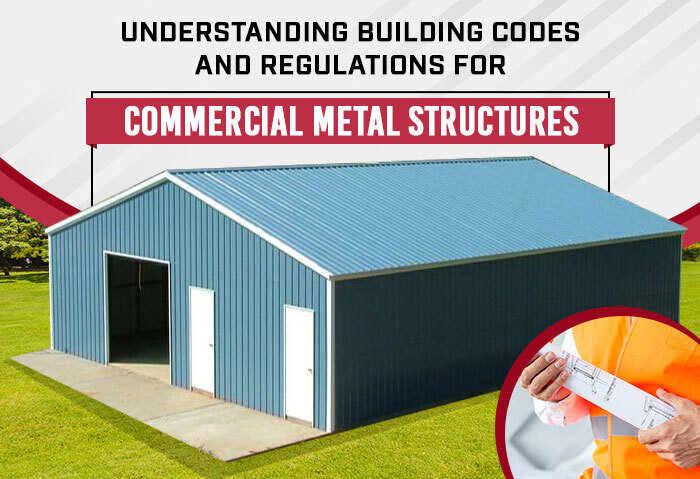
Understanding Building Codes and Regulations for Commercial Metal Structures
Over the past few years, there has been a significant focus on strengthening building codes and regulations to enhance the quality and safety of construction projects. These standards were initially introduced in 1905 by the National Board of Fire Underwriters, an insurance group that aimed to assess the suitability of buildings for human habitation.
With time, the United States witnessed the establishment of three separate organizations responsible for creating safety standards. Eventually, these organizations merged to form the International Code Council, the authority overseeing building regulations today.
Each state has its own set of building codes and regulations that must be adhered to when constructing a structure. These regulations cover various aspects, including physical safety, comfort, health, aesthetics, and accessibility of buildings.
If you are planning to construct a commercial building, it is essential to stay informed about the safety standards and regulations that apply to your project. Follow along to learn more about building codes and safety regulations!
Types of Building Codes That You Need to Know
In the United States, adherence to International Building Codes (IBC) is a crucial aspect of the construction industry. These codes establish the standards and regulations for constructing safe and compliant structures. The IBC is comprised of various statutes, each addressing specific concerns with safe construction.
1. International Building Code (IBC):
The IBC is a widely adopted model building code in the United States and many other countries. It sets performance-related standards for health and safety in buildings.
2. International Residential Code (IRC):
The IRC focuses on ensuring the safety of residential structures. It provides a comprehensive model code with minimum regulations that must be followed for buildings with three stories or less.
3. International Existing Building Code (IEBC):
The IEBC was developed to establish safety standards for renovating existing buildings. It also provides regulations for altering the occupancy of an existing structure.
4. International Green Construction Code (IGCC):
The IGCC provides guidelines for the design and construction industry to create efficient, sustainable, and resilient buildings in any environment.
5. International Energy Conservation Code (IECC):
The IECC aims to maximize energy conservation through model code regulations. It ensures the optimal use of fossil fuels and renewable resources in buildings.
6. International Fire Code (IFC):
The IFC sets guidelines to prevent fire, explosions, and other hazardous conditions. It outlines minimum safety requirements and fire prevention systems for buildings.
What will Be Evaluated in the Permit Approval Process?
When obtaining a permit for commercial metal buildings, several aspects will be assessed to ensure you are in compliance with regulations. This evaluation process typically considers factors such as building rules, zoning requirements, structural strength, fire safety, electrical systems, plumbing, accessibility, and environmental impact.
Inspections may be conducted to review the proposed construction plans and confirm that they meet the required standards. This will require a review of proper documentation, including detailed architectural and engineering drawings, permits, and supporting paperwork.
By carefully assessing these aspects, authorities can ensure that commercial metal buildings meet safety standards, functionality requirements, and regulatory compliance.
Are You Looking for a Commercial Metal Building? Let Safeway Steel Do the Job!
With years of experience in the metal building industry, Safeway Steel is your go-to source for all your commercial steel building needs. Whether you require a spacious structure to house your large industrial machinery or a compact retail store, our buildings are designed to deliver reliable solutions.
We take pride in offering durable, flexible, and versatile metal buildings that are not only competitively priced but also backed by industry-standard warranties. Your safety and satisfaction are our top priorities, and our craftsmanship ensures that your building will perform well for years to come.
Ready to start with your new building project? Give us a call today at +1 (800) 818-2245. Our team is waiting to help you construct a structure that perfectly aligns with your vision. Let’s build your dream together!